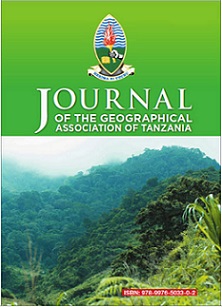Implications of Land Use and Climate Change on Water Balance Components in the Sigi Catchment, Tanzania
Abstract
Whereas normal water flow in a catchment is necessary for all forms of life, thehydrologic systems in the Sigi catchment is susceptible to land use and climate
changes. Over the past three decades, water balance of the Sigi Catchment has
indicated changes with unknown forms and magnitudes. To uncover the dynamics, this
study used SWAT model to simulate water balance to a separate and combined impact
of land-use and climate change. SWAT simulation showed good performance with
NSE=0.58 and R
=0.64 for validation periods.
Land use change scenarios indicated increase in surface runoff by 16.1mm, while base
flow and water yield decreased by 23.1mm and 7.2mm, respectively. Climate change
scenarios indicated an increase in surface runoff by 29.9mm, while base flow and
water yield decreased by 36.1mm and 14.2mm, respectively. The combined land use
and climate change scenarios indicated increase of surface runoff by 19.0mm, and
decrease in base flow and water yield by 29.7mm and 10.7mm, respectively. From the
study, it is clearly that the impacts of climate change on water balance components of
the Sigi catchment are larger than land use change. Owing to the dilemma facing water
resources in this era of climate change, long-term planning that balance households '
livelihood options and water resources management option is needed.
2
=0.67 for calibration, and NSE=0.56 and R
2
Key words: land use change, climate change, modeling, SWAT, hydrology
Downloads
Published
2016-02-12
Issue
Section
Articles


